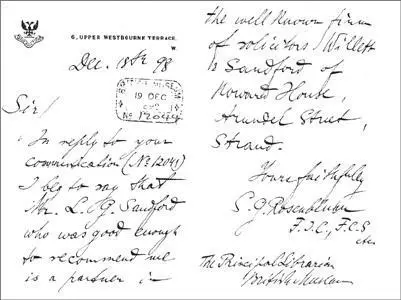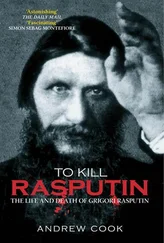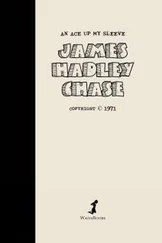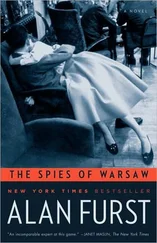The fact that they were indeed friends and associates is confirmed by an Ochrana report concerning members of the society of Friends of Russian Freedom which states that Rosenblum was, ‘a close friend of Voynich’s and especially his wife’s. He accompanies her everywhere, even on her trips to the con-tinent’. 56Whether this statement should be interpreted as implying or confirming any romantic attachment between Sigmund and Ethel is a highly debatable point. It is clear from Ethel’s own statements about this period that she was an active courier for the ‘Free Russia’ cause and travelled abroad frequently. Wilfred may well have felt that Ethel needed a protective companion to accomp-any her, knowing full well that the Ochrana would no doubt be keeping an eye on her movements. Who better than his trusted friend Sigmund? Besides which, anecdotal family sources indicate that Ethel’s sexual preferences may well have precluded a romantic attachment to Rosenblum, or indeed any other man, come to that. 57
According to the same Ochrana report, other active émigré members of the Society of Friends of Russian Freedom included:
Aladyin, A.F. (43 Sulgrave Road, Hammersmith): moved to London from Paris, first attended all gatherings of Russian and Polish revolutionaries, but now, in view of suspicion of espionage, has broken all such ties and meets only with Goldenberg.
Goldenberg, Leon (15 Augustus Road, Hammersmith): since his arrival from New York in 1895 he has been the manager of the office of the ‘Society of Friends for Russian Freedom’. He maintains relations with almost all Russian and Polish revolutionaries.
Volkhovsky, Felix (47 Tunley Road, Tooting): an active revolutionary, often gives lectures on his exile to Siberia. Took over from Kravchinsky after his death.
Chaikovsky, Nikolai (1 College Terrace, Harrow): a famous emigrant, the Poles believe him to be an agent of the Russian government. He has recently been seen meeting the Greek Mitzakis, who frequently travels to St Petersburg.
Rothstein, Fedor (65 Sidney Street, Mile End): made a speech at the last socialist congress in London under the name of Duchowietzky. A very active revolutionary, moves in Russian and Polish revolutionary circles. Took an active part in the last revolutionary rally on Trafalgar Square, standing next to other speakers by the pedestal of Nelson’s Column.
Voynich, Wilfred, alias Kelchevsky (Great Russell Mansions, Great Russell Street, Office Soho Square): took an active part in the revolutionary movement, but now is more inclined to literary work, also on revolutionary issues. Holds an annual international revolutionary library. His wife is British, a novelist.
Wilfred Voynich’s remarkable and consistent success in acquiring rare medieval manuscripts prompted a number of theories regarding the sudden appearance of these previously unknown items. According to one theory, he was acquiring supplies of unused medieval paper from Europe and using his knowledge as a chemist to replicate medieval inks and paints, thus enabling him to create ‘new’ medieval manuscripts to order. One of Voynich’s early employees, Millicent Sowerby, confirms that he sold blank fifteenth-century paper to select customers for a shilling a sheet. 58While this confirms that he at least had access to the paper, what evidence is there to suggest that either he or Rosenblum had the capability to recreate medieval paints and inks? The best source for anyone wanting to research the composition of such properties was the British Museum Library, whose extensive collection contained numerous volumes on medieval art and manuscripts.
Perusal of the museum’s records reveals that on 17 December 1898 the principal librarian received a letter of application from one Sigmund Rosenblum seeking a reader’s ticket to enable him to use the Reading Room. According to his letter of application he was a ‘chemist and physicist’ wishing to study medieval art; a character reference provided by Leslie Sandford of the legal firm Willett and Sandford intriguingly states that Rosenblum was ‘engaged in scientific research of great importance to the community’. 59A reader’s ticket was issued and Rosenblum began his research on 2 January 1899. Of course, he could have had other or indeed additional motives for his research, which are explored later in this chapter.
If Rosenblum was informing on Voynich, to whom was he supplying the information? Prior to the creation of the Secret Service Bureau in 1909 (the forerunner of MI5 and MI6), émigré matters were the preserve of the Metropolitan Police Special Branch. ‘The Branch’ had been created in 1887 as a successor to the Special Irish Branch. Unlike the SIB, however, the new Special Branch had a much wider ‘anti-subversion’ remit than purely countering Irish Republican terrorism. Under its first chief, Scotsman John Littlechild, the Branch consisted of no more than thirty officers. Littlechild resigned in April 1893, to establish his own private detective agency, and was succeeded by William Melville, under whose leadership the Branch grew in size and reputation, establishing itself as a power in the world of secret agencies. 60
Born a Roman Catholic in Sneem, County Kerry, on 25 April 1850, William Melville joined the Metropolitan Police on 16 September 1872, and was a member of the SIB from its inception in 1883. 61He was, without doubt, one of the most intriguing and distinguished men ever to lead the Special Branch, holding the post for ten years before mysteriously resigning at the peak of his police career in 1903. Prior to his appointment he had been in Section B, in charge of ‘counter-refugee operations’, a responsibility that gave him an intimate knowledge of political exiles, émigré groups and ‘undesirables’ of all varieties. He was described by colleagues as a ‘big broad-shouldered man with tremendous strength and unlimited courage’. 62From contemporary police reports and newspaper coverage, Melville comes across as an effective and single-minded officer who was the antithesis of almost everything the Scotland Yard detective chief inspector was portrayed to be by the popular media of the time.

Sigmund Rosenblum gave the name of solicitor L.J. Sandford to vouch for his application to be allowed to research into medieval art at the British Museum.
The secret of Melville’s success was undoubtedly his intelligence network. He was a meticulous man whose records suggest that he carefully checked out the backgrounds of his key informants. It is thanks to his intimate knowledge of those who were part of his network that we come closest to finally establishing solid documentary evidence concerning Reilly’s place and date of birth. Prior to his election as a Fellow of the Chemical Society, on 18 June 1896, Rosenblum had been required to submit official Russian documentation to establish his date and place of birth. While still in the possession of the society, pending the committee’s decision on membership, the document was perused by one of Melville’s officers, who, satisfied by the document’s authenticity, recorded in his report that Rosenblum was born on ‘11 March 1873 in Kherson, Russia’. 63At this time Russia was still using the Julian calendar, which was thirteen days behind the Gregorian calendar in use elsewhere. The date on the Russian document would therefore equate to 24 March in terms of the Gregorian calendar.
Agents and informers were the most significant intelligence sources Special Branch had in terms of the Russian and Polish émigré communities, and were recruited in a variety of ways. Some were approached by detectives either on recommendation or through the course of everyday enquiries. A minority offered their services to officers. Whether they were approached or had volunteered, the motive was usually the same – money. Each officer had his own private circle of informers, whom he paid out of his own pocket and then claimed from his expenses. Sigmund Rosenblum, although well endowed with money when he arrived in England, had a propensity to spend his ill-gotten gains almost as quickly as he had come by them. Money was, as so often in his life, his prime motivator and the reason he became a Special Branch informer.
Читать дальше













